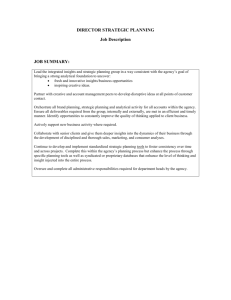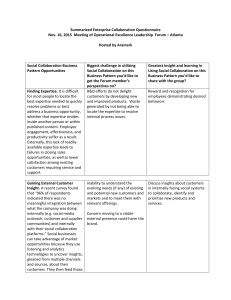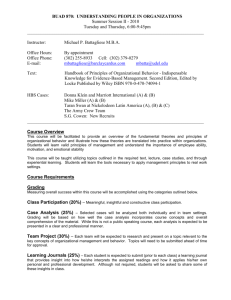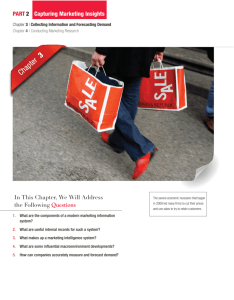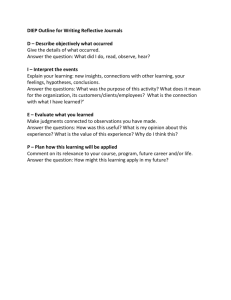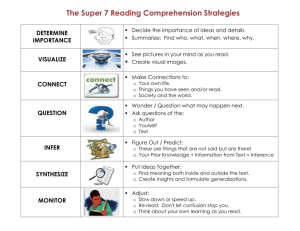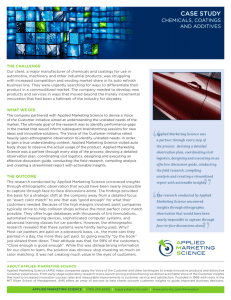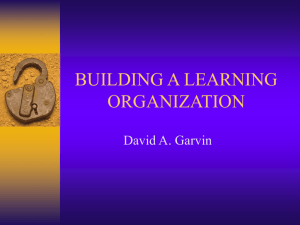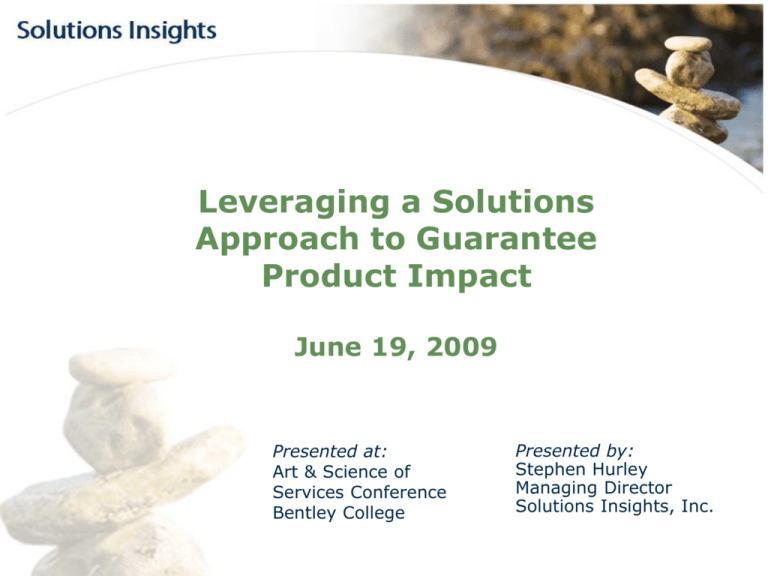
Leveraging a Solutions
Approach to Guarantee
Product Impact
June 19, 2009
Presented at:
Art & Science of
Services Conference
Bentley College
Presented by:
Stephen Hurley
Managing Director
Solutions Insights, Inc.
Solutions
What is it??!!
© 2009 Solutions Insights. All Rights Reserved.
2
© 2009 Solutions Insights. All Rights Reserved.
3
Even Dilbert is talking about solutions!
© 2009 Solutions Insights. All Rights Reserved.
4
Even Dilbert is talking about solutions!
© 2009 Solutions Insights. All Rights Reserved.
5
Even Dilbert is talking about solutions!
© 2009 Solutions Insights. All Rights Reserved.
6
These are more typical of the solutions
that exist in the B2B world.
© 2009 Solutions Insights. All Rights Reserved.
7
Much of the breakthrough research
on technology-based solutions has
been developed by ITSMA...
Agilent Technologies
Alcatel-Lucent
AT&T
Avanade
Avaya
BEA Systems
BearingPoint
BT
CA
Capgemini
CGI
Cisco Systems
Cognizant
CompuCom Systems
CSC
Diebold
EDS, an HP Company
EMC
Ericsson
Fujitsu Services
General Dynamics
Information Technology
HCL Technologies
HERMES Softlab
Hewlett-Packard
IBM Global Services
Infosys Technologies
Iron Mountain
Juniper Networks
Keane
KPMG
Kumaran Systems
Lenovo
Logica
Microsoft
NCR
NetApp
Nokia Siemens Networks
Northrop Grumman
Information Systems
Oracle
Orange Business
Services
Patni
Pitney Bowes
Polycom
Raya Integration
Satyam
SBS Group
Siemens Enterprise
Communications
Steria
Stratus Technologies
Sun Microsystems
Symantec
Talent Partners
Tata Consultancy
Services
Tellabs
Tiger Lily
TriZetto
Utimaco Safeware
VMware
Wood Mackenzie
Xerox
ITSMA provides research and consulting insights on how to sell and
market services to the world’s leading technology companies.
© 2009 Solutions Insights. All Rights Reserved.
8
Solutions are real—at least in the eyes
of the technology vendors.
Q. How important is the solutions business to your company?
% of Respondents (N=41)
Extremely
Important
Mean Rating = 4.6
Not at All
Important
Source: ITSMA
© 2009 Solutions Insights. All Rights Reserved.
9
DEFINITION
So…what is a solution? ITSMA’s Solutions
Council came together and agreed upon the
following definition.
A solution is a combination of products and/or
services with intellectual capital, focused on a
particular customer problem, which drives
Source: ITSMA Solutions Council 2006
measurable business value.
Source: ITSMA
© 2009 Solutions Insights. All Rights Reserved.
10
Here’s another way to look at it…
A Solution is…
Technology
Process
The Solution
Resources
Understanding
Customer Needs
Delivering Measurable
Business Value
Source: ITSMA
© 2009 Solutions Insights. All Rights Reserved.
11
Solutions-related terms are hierarchical
and discrete.
A Particular
Customer
Customers
with Common
Problems
Targeted
Segments
Targeted
Functions
Generic
Customers
Source: ITSMA
© 2009 Solutions Insights. All Rights Reserved.
12
Solutions appear to be an important
part of a company’s overall portfolio.
Sponsors & Approach
Executive Summary
Methodology & Demographics
Detailed Findings
Q: What percentage of your company’s total revenue would you
attribute to your solutions business, or to integrated business
solutions, vs. discrete products or services?
Mean % of Total Revenue (N=31)
Discrete product and
services revenue
(59.4%)
Solutions revenue
(40.6%)
Median: 30%
Range: 0-100%
Source: Solutions Insights/ITSMA Survey: Selling Solutions, March 2009
© 2009 Solutions Insights. All Rights Reserved.
13
Let’s give this a bit of a historical
perspective…
We noticed a significant shift
in how ITSMA’s members were
marketing shortly after
“The Great Bust” in 2000…
Reasons for the shift:
Dissatisfied customers
Continuation of product
commoditization and margin
squeeze
A screeching halt to industry
growth; a scramble for a more
meaningful value equation
© 2009 Solutions Insights. All Rights Reserved.
14
So ITSMA’s members definitely made
the move, and cited the following
reasons…
The Big Three
Increase company
revenue (net new)
Others Mentioned
Increase value delivered to
the customer
Increase product or services
Increase overall
profitability
Respond to
customer demand
Source: ITSMA
revenue (pull-through)
Increase share of wallet
Increase customer loyalty
Increase sales productivity
Increase control over
customer satisfaction
© 2009 Solutions Insights. All Rights Reserved.
15
Let’s look at solutions in the context of
other strategic planning models.
COMPARISON OF STRATEGIC PLANNING METHODS
Method or
Tool
Purpose
Key Elements
Porter’s Five
Forces
Understand all of the external
forces that can influence strategic
direction
Buyer Power, Supplier Power,
Substitutes, Government
Regulations, and Competitive
Pressures
PEST
Understand how a range of
external forces impact a company
Political, Economic, Social, and
Technology influences
SWOT
Analyze how a company compares
against a competitive set
Strengths, Weaknesses,
Opportunities, and Threats
BCG Matrix
Determine how to allocate
investments across a range of
products, services, Business Units,
or subsidiaries
Cash Cow, Rising Star, Dogs, and
Question Marks
Solutions
Understand how to optimize all of
the company’s resources —
products, services, and IP —to
best meet customer needs and
deliver value
Cross-Organizational Collaboration,
Solutions Council, Integrated
Financial Models, Buyer Behavior
Predictive Modeling, Consultative
Selling
© 2009 Solutions Insights. All Rights Reserved.
16
Here are some examples of companies
that have moved from products to
solutions.
Company
Starting Point End Point
Motivator
Home Depot
Products sold to
handymen and
contractors
Installation services
for wide range of
products
Customer
demand;
dissatisfied
handymen
Toro
Corporation
Large lawn mowers
sold to maintenance
departments for golf
courses
Outsourcing of golf
course maintenance
Revenue
generation;
offering
extension
GE Medical
Systems
Medical devices and
related services sold
separately
Integrated products
and services to
address broader
business problems
Customer
demand and
revenue
generation
EMC
Corporation
Data storage units sold
to IT departments
Integrated storage,
networking, and
virtualization
products and
services sold to
address broader
business problems
Customer
demand, revenue
generation, and
competitive
threats
© 2009 Solutions Insights. All Rights Reserved.
17
ITSMA developed a Solutions Roadmap
in collaboration with its Solutions
Council.
Starting Point
Phase 2
Phase 3
Phase 4
The Push
and Pull
Pilot and
Test
Building the
Foundation
Organizational
Execution
Sell Only
Discrete
Offerings
Leverage
Opportunistic
Solution Successes
Enable the
Organization
Operationalize
the Plan
Five
Core
Elements
Organization
Source: ITSMA
Marketing
Activities
Portfolio
Management
Sales
and Sales
Enablement
Phase 5
Solutions
Mastery
Sustain
Momentum
and Growth
Culture and
Behavior
© 2009 Solutions Insights. All Rights Reserved.
18
Each Element must be managed as
a company moves to a new Phase.
Portfolio Management
Starting Point
The Push
and Pull
Phase 2
Phase 3
Pilot and
Test
Building the
Foundation
Phase 4
Organizational
Execution
Phase 5
Solutions
Mastery
Portfolio Management: Solutions Management
Products and services are
bundled into packages for
ease of selling
Cost-plus or product-based
pricing predominates
Few or no external
partners are involved
There is little cross-BU
coordination; services and
products are developed
independently
New offering development
is product- or practice
area-led
For product companies,
services take a back seat to
products
For product and service
companies, there is a
limited view of solutions
opportunities due to
organizational silos
Source: ITSMA
Products and/or services
plus IP are combined to
deliver an integrated
solution; may also include
partner-provided offerings
Cost-plus or market pricing
dominates
The portfolio is composed
primarily of offerings based
on available
supply/capabilities
There is little sharing of
cost information between
partners
Solutions development is
primarily field-based;
entrepreneurial
New solutions development
is both product- and
services-led
Solutions development
processes are tested with
beta solutions
The solutions portfolio
becomes more demanddriven, requiring deeper
collaboration across BUs
and with business partners
More flexible pricing
models based on value
added and benefits
delivered are introduced
Partner costs are
integrated into pricing
models
Solutions life-cycle
management is not yet well
developed
The solution development
process becomes
increasingly standardized
Offerings are combined
with those of business
partners to deliver a more
complete solution
Development costs are
allocated separately to the
BUs that control the
offerings
The “voice of the field”—
opinions of sales and
delivery staff—provides
input to the development
process
There is a portfolio of
integrated, repeatable
solutions, with seamless
messaging and value
propositions
Business partner
capabilities and offerings
are more tightly
integrated; however,
pricing continues to be
customized by particular
opportunity
There is more serious
experimentation with
results-based pricing
models
Appropriate systems,
processes, and governance
are used to develop
solutions centrally, based
on field experience
Repeatability of solutions
improves through mass
customization
Solutions are managed as
part of a portfolio to reduce
complexity, maximize
profit, and encourage
innovation
Value pricing is used
extensively; results-based
pricing becomes more
frequent
Information is shared with
partners to enable joint
offer development, pricing,
marketing strategy, and
sales
Clients and influencers
recognize firm expertise in
a number of focused
solution areas
Clients take a larger role in
solutions development
A significant portion of
development costs are
centrally managed
Fully integrated solutions
packages are developed
with partners
© 2009 Solutions Insights. All Rights Reserved.
19
Member companies have made the changes
required to move into the next phases of
ITSMA’s Solutions Roadmap.
Starting Point
The Push
and Pull
Sell Only Discrete
Offerings
Source: ITSMA
Phase 2
Phase 3
Pilot and
Test
Building the
Foundation
Leverage Opportunistic
Solution Successes
Enable the
Organization
Phase 4
Organizational
Execution
Operationalize
the Plan
Phase 5
Solutions
Mastery
Sustain Momentum
and Growth
© 2009 Solutions Insights. All Rights Reserved.
20
Be careful about your strategy and
tolerance for pain!
The Evolution of a Solutions Company—From Discovery to Commitment
“Hey!! Look! Everyone’s
pushing solutions…
we better do it, too!!”
Technology-Based
Solutions
“Wait a
minute —
What is a
solution?”
“Hooray! We’ve done it!
Our website says we’re
selling solutions…that means
we are a solutions company!”
“We’re making
progress...
and it’s worth it!”
“Do we really
want to sell
solutions?”
“Hey…this is a lot of
hard work.”
© 2009 Solutions Insights. All Rights Reserved.
21
There are a number of considerations
as you develop your solutions strategy.
Custom
Companywide
Turn Key
Business Unit
Technology Infrastructure
Business Process
Supporting Role
Primary Strategy
Overlay Structure
Core Brand Positioning
Source: ITSMA
Integrated Structure
Sub-brand Positioning
© 2009 Solutions Insights. All Rights Reserved.
22
The trend appears to be towards
“productizing” solutions.
Sponsors & Approach
Executive Summary
Methodology & Demographics
Detailed Findings
Q: Solutions can range from highly customized one-off deployments to highly
packaged offers combining many “fixed” elements such as products or
implementation services. Some firms strive for mass-customization—the right mix
of off-the-shelf products/services with strong market or customer customization.
In response to the current economic climate is your firm planning to:
% of Respondents (N=31)
Build and deliver more
customized solutions (16%)
Build and deliver more
highly-packaged
solutions (36%)
Source: Solutions Insights/ITSMA Survey: Selling Solutions, March 2009
Build and deliver more
mass-customizable
solutions (48%)
© 2009 Solutions Insights. All Rights Reserved.
23
So…what are your 3 takeaways?
● Complex products require services
in order to realize their benefits—
the question is who will provide
these services?
● Product enablement into the
customer’s business environment
needs to be designed into the
product from the beginning
● Product enablement requires that
you transform your entire value
chain—not just your marketing
messages
© 2009 Solutions Insights. All Rights Reserved.
24
Go
Forth
and
Solve
© 2009 Solutions Insights. All Rights Reserved.
25
Questions
© 2009 Solutions Insights. All Rights Reserved.
26


